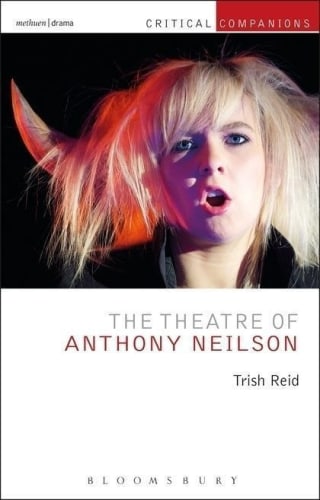As with so many books in Bloomsbury’s Critical Companions Series, The Theatre of Anthony Neilson presents a good overview of the plays and career of a significant Scottish playwright.
As she identifies in the introduction, “Anthony Neilson is among the most consistently entertaining, compelling and experimental playwrights of our time”. In his early days, he was also identified as one of the most shocking, initially taking a significant place in the cadre of In-Yer-Face playwrights alongside the likes of Sarah Kane and Mark Ravenhill, although the justification of this classification is challenged, largely based on retrospective data.
Rather than working chronologically, Ms Reid intelligently classifies a career that has now stretched over a quarter of a century into a series of categories.
Much of the early work comes into chapter 1 entitled "Dramaturgies of Love: Relationship Plays". Given that the pieces chosen are the deeply shocking Penetrator, The Censor and Stitching, the title is likely to seem somewhat ironic.
What one realises going through the remaining sections is the diversity of Neilson’s work. While the early plays were genuinely chilling, he then went through a fantasy phase exploring the subconscious, including his most popular work The Wonderful World of Dissocia, before developing a new methodology in plays such as Realism, Narrative and most recently Unreachable.
By that point, the playwright seems to have made a conscious decision to tap into his own unconscious and kick ideas around with his actors, Out Of Joint fashion, during a rehearsal period that he always directs personally.
Neilson and Trish Reid appear to be equally angry about some of the critical reception, apparently preferring responses from young bloggers and the Twitter community, which makes its own statement about the writer’s intentions in his latest work.
In particular, increasingly he seeks to challenge himself and the theatrical industry into considering what is meant by normality and reality, considering whether the stage is really the right place to reproduce close approximations to what goes on in the outside world rather than experimentation with form and fantasy. This proves food for plenty of thought and some theories which vary between the highly intelligent and the outlandish.
The book ends with four pieces that, in retrospect, readers will realise illuminate most of the earlier text. The first is an interview by Trish Reid with Neilson in belligerent mood.
The second is an insightful article in which Gary Cassidy takes readers through Anthony Neilson’s unusually collaborative rehearsal process, having been given access to a large part of the time spent by the actors and writer-director in the creation of his Royal Court play Narrative.
What is most interesting about this is the relatively small contribution that the actors apparently contribute to what finally gets to the stage. From the examples given, this seems to be far more to do with tweaks to mood and text rather than impacting on the overall structure and direction of the final work. Following that, Anna Harpin and Mark Brown present theories that could prove controversial.
Lay readers may struggle at times, since Trish Reid and her fellow writers have a tendency to use the kind of language beloved of academics that can prove a little tricky for the uninitiated.
However, where this £75 volume really scores is in Trish Reid’s ability to summarise each of Neilson’s plays economically but accurately and her willingness to explore underlying meaning.
